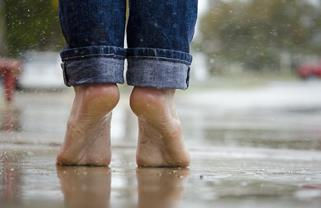Sun Exposure or How to Stay Safe In the Sun
- Chin Ling
- Oct 3, 2016
- 4 min read
Updated: Sep 23, 2022
We are learning more about the damaging effects of UV light on the skin but in the UK it still doesn’t stop our enthusiasm for bronzing ourselves as soon as the summer comes. Even if we don’t sunbathe, we should still be aware of sun.

Consider driving: the side of you that is nearer the window absorbs UV light. In America, they found that drivers who regularly drove in the car had more UV damage on their left arms than their right.
Leading skin experts state that the natural human ageing process results in about 5-10% of the visible signs of ageing. The other 90-95%, including lines and wrinkles is caused by sun damage. Quite a shocking statistic!
However, we seem to be bombarded with conflicting advice on whether we should sunbathe or not. Up to recently, some health organisations were recommending that you stay out of the sun altogether to prevent skin cancer. However, this advice has been criticised by some leading scientists and nutritionists. In terms of beauty, we know that sun exposure causes brown spots or pigmentation on the skin and, as a result, skin whitening products are very popular, especially in the Far East and Asia. However, the fact remains that we need vitamin D.
The psychological benefits of exposure to sunlight are invigorating and uplifting. Sunlight stimulates production of serotonin which makes us feel good and, at the same time, suppresses melatonin so we feel less tired. Vitamin D from the sun help us absorb calcium and prevent osteoporosis (porous bones). If we just depended on eating calcium-rich foods, this is not insurance enough against this disease. Vitamin D absorbs the calcium from the food and stores it in the bones. Without the vitamin, calcium may end up depositing itself in areas other than the bones, which is not good news.
And there’s more. Vitamin D helps to fight infections and stop the spread of cancer cells. Professor William Grant who is a former NASA scientist estimates that in the UK, where we get 1,600 deaths a year from melanoma due to excessive sun exposure, we probably get around 25,000 deaths due to insufficient sun exposure. More evidence from researchers is showing an increased link between vitamin D from sunlight and the reduction in cancer risk. People who live in areas where there is more sun have reduced risk of breast and prostate cancer. For more information on the correlation between vitamin D and cancer, see http://www.sunarc.org.
In addition, researchers at Aberdeen University revealed that lack of vitamin D from sunlight contributes to obesity. Vitamin D controls the hormone leptin which signals to the brain when you are full. They found that those who were obese had lower levels of vitamin D, in fact they produced a tenth less vitamin D than those of average weight.

Dr Des Fernandes recommends exposure of 20 minutes per day, with shorter bursts in strong sunlight. 20 minutes is considered the time it takes to convert vitamin D from sunlight into active vitamin D in our bodies. Any further exposure requires protection or the vitamin will be destroyed. Of course, during the colder months where there is less sun this is more difficult, in which case, it is important during the warmer seasons to ‘top up’ our vitamin D stores. It is said that our bodies can store vitamin D for up to 6 months after moderate exposure to sunlight.
Topping up on a sunbed is not a good way to supplement your exposure. Sunbeds mostly block out the UVB rays but not the UVA rays. It is the UVB that makes the vitamin D in your skin. All you’ll get from a sunbed is a tan and wrinkles as a result of the accelerated ageing from UVA.
Suncreams also concentrate on blocking out UVB rays so that you can stay out for longer without burning but not all creams offer protection from UVA. The jury is still out on how high you should go with the SPF protection on a suncream with some skin experts saying to go no higher than SPF15 or 20 while others recommending higher depending on where you are in the world and your skin 's reaction in the sun.

Protect yourself well on the inside as well as the outside. Build up your store of vitamins A and C by eating foods that are rich in these vitamins and other anti-oxidants and apply skin products that have potent quantities of vitamins A, C and E as these get destroyed by the sun so need replacing. If you feel the need to supplement, you can take between 200 and 400 ius of vitamin D per day but oral supplementation should not be your first port of call. In the presence of sunlight, your body controls the levels of vitamin D it produces but with a supplement it can’t do this. Too much and you may reach toxic levels.
Last but not least, don’t use your suncream from last year if
a) it’s been opened already, or
b) is past the use by date. The sun protection factor will have gone off. Bin it!
So, don’t be afraid to go out in the sun. Expose your arms. Expose your legs. You can still don a hat and good sunglasses to protect your eyes and call it fashion or insurance against premature ageing.




Comments